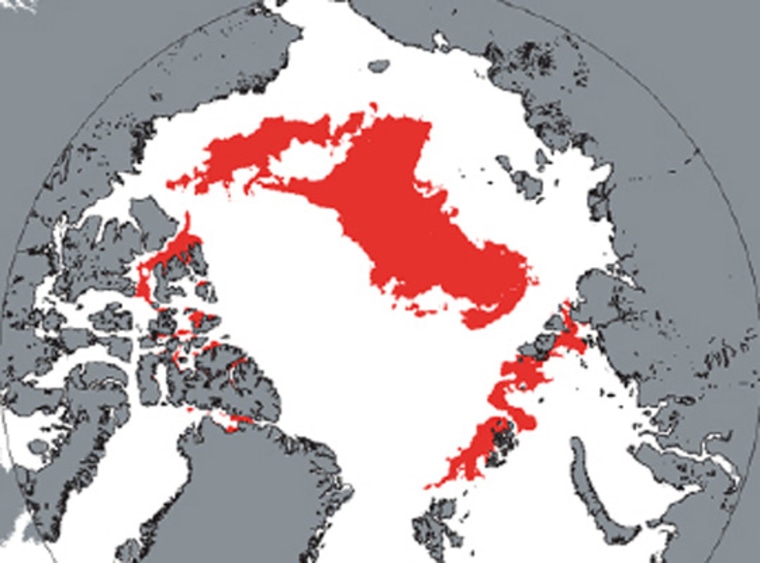Record summer sea ice losses in the Arctic Ocean are now leading to bursts of ocean life in the newly open waters, say researchers watching the north polar sea from space.
Blooms of phytoplankton have been increasing as the summer sea ice shrinks further back every year, according to observations made using the space-borne ocean color monitoring instrument called Seawifs.
"It's going up," said Stanford University researcher Kevin Arrigo, referring to the surge in phytoplankton in Arctic waters. "That was a surprise to us."
Arrigo coauthored a paper reporting on phytoplankton productivity for 2007, which adds to previous observations made from 1998 to 2006. The paper appears in a recent issue of the journal Geophysical Research Letters.
What makes the phytoplankton trend surprising is that the microscopic plant-life continues to boom each summer without any signs of slowing — at least in the nine years that Seawifs has been up there watching. That sort of growth runs against a generally accepted idea about Arctic Ocean waters.
"People typically think of the Arctic as a nutrient-limited system," said Arrigo.
In other words, there isn't a lot of fertilizer in the Arctic waters to support these tiny photosynthetic organisms. So either the phytoplankton blooms will soon start to reflect the scarcity of food by tapering or leveling off, or there's got to be another source of nutrients somewhere up there, Arrigo told Discovery News.
One alternative phytoplankton grocery store could be upwelling caused by wind blowing on the newly exposed waters. The wind can cause nutrient-rich deeper waters to mix with surface waters, making a nourishing soup for plankton.
Another possibility is that run-off from thawing lands around the Arctic Ocean is adding nutrients. The latter idea is less likely to cause the productivity that's been seen far out at sea, however, Arrigo said.
The same changes in the Arctic Ocean are quite plain to researchers who venture there by ship. One of them is Jean-Éric Tremblay of Université Laval in Québec, who studies the phytoplankton in the Beaufort Sea, a part of the Arctic Ocean north of Alaska and Canada's Northwest Territories.
"In the Beaufort Sea the wind acts directly on the surface of the ocean so it's being mixed," Tremblay confirmed. "It looks more like the North Atlantic in the autumn."
As for the details about which species of phytoplankton is doing what — which is critical to see how it affects the food web or carbon cycle of the Arctic — that's not at all clear yet, Tremblay said. The problem is some phytoplankton species are great for the food web and others are not. Moreover, everything is happening fast, and it's pretty new.
"In some places the ice has been away for just one year," Tremblay noted. The water temperature is still too low for some plankton species. But that is likely to change and the perennial sea ice continues to shrink and the Arctic waters are exposed earlier and earlier to sunlight every summer. "We think that in the near future the situation will change."
